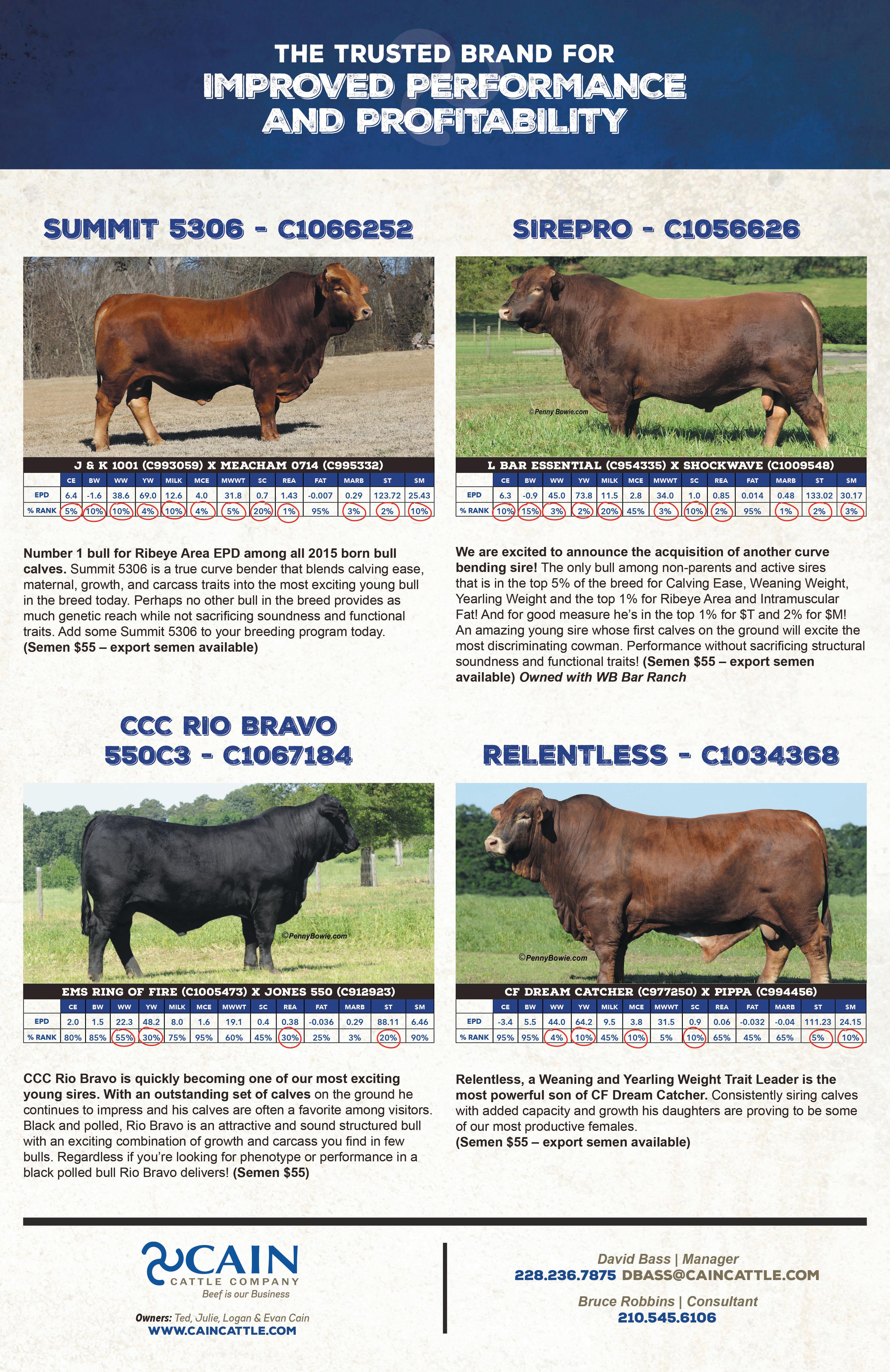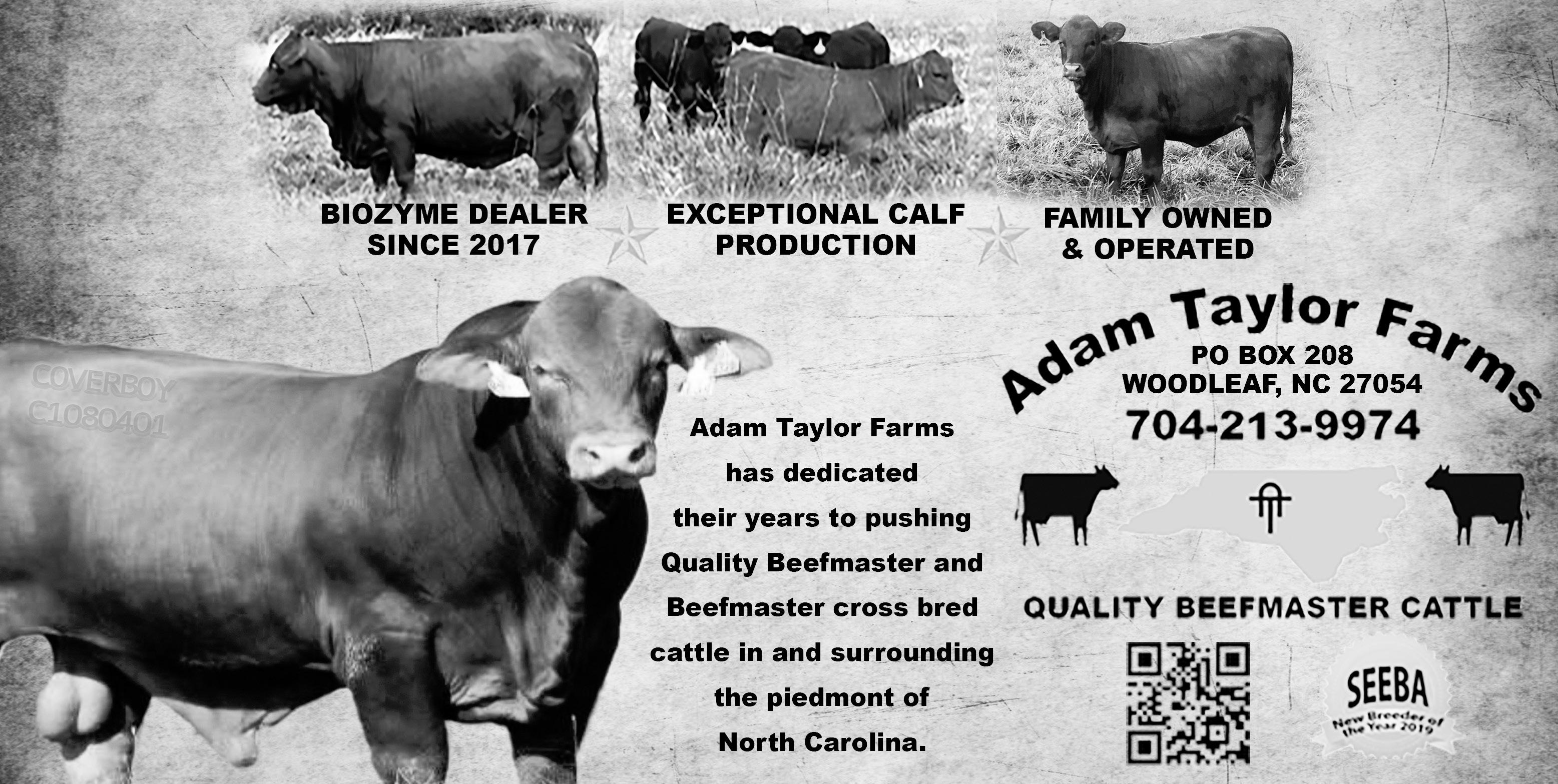
6 minute read
Prepare for Drought with Regenerative Ag Mindset by Hugh Aljoe, Noble Research Institute
Prepare for Drought with Regenerative Ag Mindset
by Hugh Aljoe, Noble Research Institute
Advertisement
Drought is a natural and regular event in grazing lands. A drought is a period of time when an area or region experiences below-normal precipitation. The lack of adequate precipitation can cause reduced soil moisture or groundwater, diminished stream flow, crop damage, and a general water shortage. For livestock producers and managers of grazing lands, this means lower forage production and potential livestock water shortages. In terms of climate, we experience alternating periods of dry and wet weather. The southern Great Plains in particular has experienced a favorable wet period over the last few years. However, meteorologists are now saying weather patterns are changing and the long-range forecast predicts drier conditions ahead, perhaps for the next few years.
Drought Resilience with Regenerative Ag
In observing producers implementing regenerative agricultural practices, we find a unique mindset toward drought. We find producers who routinely manage operations proactively, meaning they operate in relation with the weather conditions. They manage anticipating drought long before it occurs. These producers usually have contingency plans in place to nimbly deviate from their “ideal” management plan and adapt to unfavorable weather patterns.
continued on page 19
Put longevity and fertility back into your cowherd
Johnson Beefmasters
mccammon, Idaho
Casey herd sire 2-159

Bulls and Females Available at the Ranch - Call For Details

doug & LexIe Johnson
208-681-5967 johnsonbeefmasters@gmail.com
@johnsonbeefmasters
HEAVY MUSCLED CLEAN SHEATHED RANGE BULLS DEVELOPED FOR NORTH WEST RANGES AND MARKETS


As a bonus, producers practicing regenerative agriculture and grazing typically manage through droughts more easily with fewer adverse impacts on their land and profitability. Their grazing lands also recover more rapidly than other lands, where regenerative grazing is not routinely practiced.
Build Organic Matter
The successful longterm application of regenerative agriculture and regenerative grazing results in improvements in the soil and plant communities that make the soils more resilient and drought tolerant. Managing soils regeneratively results in the building of organic matter above, at and below the soil surface. Regenerative grazing complements the soil health principles but only because the grazing is managed in a way that matches stock numbers to forage biomass, manages for short grazing periods, uses moderate grazing during the active growing season, leaves adequate plant cover after each grazing event, and follows each grazing event with adequate planned recovery. Over time, soil organic matter, soil health and water holding capacity improves. Pastures become more productive, vigorous, and more resilient during drought (and floods).
Manage Pastures with Livestock, Not for Livestock
Regenerative graziers actually manage their pastures and forage inventories with livestock instead of their pastures for livestock — pasture and grazing management are the priorities. There is a
distinction here that indicates a different, forward-thinking mindset. The distinct advantage regenerative grazing producers have over other livestock producers is they are prepared to adjust stocking rates with forage availability and growing conditions. At the onset of drought, they begin adjusting their management plan and stock numbers based on preset criteria and triggers outlined in a drought contingency plan. They actively monitor both moisture conditions and forage production, and then they adjust stock numbers to reflect actual conditions. Regenerative producers are both mentally
and logistically prepared to make sound, proactive management decisions for the short- and long-term benefit of the land resource and ranching operation when droughts occur.
Have a Plan
As stated earlier, meteorologists have begun providing evidence that the favorable precipitation patterns are now changing, shifting to what is expected to be a drier period. Producers practicing regenerative grazing for many years are monitoring their forage production now and know the capabilities of their pastures to withstand short- or long-term dry spells. They are prepared to implement drought plans to protect the land resource when severe drought sets in. They have managed their pastures and stocking rate proactively and are accustomed to balancing livestock demand to forage production. As a result, their grazing lands are more resilient with improved soil health and soil organic matter, increased water holding capacity, and enhanced forage production capabilities. Rainfall that occurs during a drought is more effective. Once drought breaks and favorable precipitation patterns return, these grazing lands that have been managed according to the soil health principles and regenerative grazing will respond much more readily to rainfall events with little or no evidence of adverse effects from the drought. continued on page 20

LL MR PD 501
C1053958

polled/scurred son of Double L semen available low birth weight
Selling 1 Bull & 3 Heifers (two polled) Sired By PD 501 at Beef On Forage Texoma March 20 - McAlester, OK
CE BW WW YW MILK MCE MWWT STAY AFC
EPD 4.11 -1.2 29.0 54.6 12.2 2.3 26.7 -0.2 0.2 %Rank 35 10 30 20 10 95 20 50 85 SC REA FAT MARB $T $M
EPD 0.8 0.48 -0.027 -0.10 94.08 20.71 %Rank 15 20 65 80 20 20
LARRY LAIRMORE 903.278.7623 HEBER SPRINGS, ARKANSAS LAIRMORE72@YAHOO.COM
The mindset of a producer practicing regenerative grazing is certainly better prepared for drought.
What Is Regenerative Ag?
Regenerative agriculture is the process of restoring degraded soils using practices based on ecological principles. Regenerative agriculture promotes:
- Building soil organic matter and biodiversity
- Healthier and more productive soil that is drought- and flood-resilient
- Decreased use of chemical inputs and subsequent pollution - Enhanced wildlife habitat - Capturing carbon in the soil to combat climate change
The above listed outcomes result from strategically applying management practices based upon the five principles of soil health, which are:
- Keep the soil covered
- Minimize soil disturbance
- Keep living roots in the soil all year
- Increase plant diversity
- Integrate livestock properly
What Is Regenerative Grazing?
As one can deduce, regenerative grazing complements the soil health principles. It is the essence of the principle, “integrate livestock properly.” On grazing lands, regenerative grazing means:
- Grazing for short periods.;
- Grazing moderately in the growing season.
- Leaving adequate plant cover followed by adequate, planned recovery that is facilitated by effective multipaddock grazing management protocols. - Adjusting stock numbers to match forage biomass.
In other words, the grazing is planned, managed and in sync with the growing conditions at any given period of time.
Hugh Aljoe Director of Producer Relations Noble Research Institute

BERACHIAH BEEFMASTERS
Breeding Polled Beefmasters since 1982 Lawrence and Connie Shuey Dale and Karen Shuey
Cassville, MO 65625
417/826-5881 417/773-0151
berachiah1941@gmail.com @ berachiah.beefmasters










